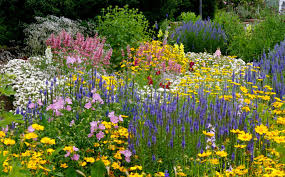 How does that neighbor get the prettiest blooming yard? If ever you catch gardeners in their yard, ask! Most gardeners would love to talk (on and on) about their yards. Once they start, the information turns to Latin and it’s all over! You’ve just encountered a plant nerd. It feels safest to retreat to the store and buy one or two packs of petunias. Then, as the summer goes on you find it’s just not the same impact! Chalk it up to another year of gardening over!
How does that neighbor get the prettiest blooming yard? If ever you catch gardeners in their yard, ask! Most gardeners would love to talk (on and on) about their yards. Once they start, the information turns to Latin and it’s all over! You’ve just encountered a plant nerd. It feels safest to retreat to the store and buy one or two packs of petunias. Then, as the summer goes on you find it’s just not the same impact! Chalk it up to another year of gardening over!
Too much information can make flower gardening daunting.
Let’s see if we can break it down so you can find your level of interest and enjoy it! The term “wildflower” can be deceiving. Blooming natives may come to mind. By some standards it defines annuals that bloom all summer and generate plants by seed the following years; examples: alyssum or California poppies. Blends of wildflower seed may contain “fillers” including clover. Unless you know the difference between flowers and weeds, this endeavor can become a nightmare! Individual seed packets solve that problem. Read the packets for ideal growing conditions. This route can be disappointing: initially you water more; the water brings weed and grass seeds as well, leading to more weeding; not all the varieties do well.
Buying plants gets costly but there’s immediate gratification. Here’s a guide to some types.
Annuals: are least expensive and generally will bloom all summer but will not come back the following year.
Bi-ennials: bloom all summer and will perform for two years, example: pansy, viola and dianthus. Perennials: should come back from the root each year but may bloom only a portion of the summer. Perennials can be native, which is indigenous, but may not be as showy, example: pussytoes and delphinium. Other varieties are hardy to the region, introduced from elsewhere or a hybrid that can survive here. Some perennials are less tasty to deer (daylilies) and some thrive in the shade (hosta). Many can survive with less water than annuals once they have been established. Providing mulch and good soil amending can also reduce watering.
Colorado based publications narrow the scope into our region- bringing the selections into a more manageable data base. Colorado Nurseryman and Greenhouse Association has booklets for sale at reputable Garden centers, CSU offers publications on line that are very specific. Start by finding the website http://www.ext.colostate.edu. There you’ll find information on:
Wildflowers- publication #7233
Perennials- publication # 7405
Natives- publication #7242
Mountain flowers- publication #7406
Xeriscape- publication #7231
For yards with deer scroll down to Wildlife for publication #6520
Some rules of thumb:
Full Sun = 6-8 hours of direct sun
Partial Shade = filtered light all day or approximately three to five hours direct sun
Shade = less than three hours sun.
Zone: We are USDA Zone 3 or 4 depending on your location. (Click here for more info from the USDA) Altitude does make a difference! One season doesn’t make a garden. It’s a lot of effort and some money. Easiest start is grab a cup of tea or coffee, peruse the publications and highlight what suits you. That makes you a smarter shopper and better gardener!
